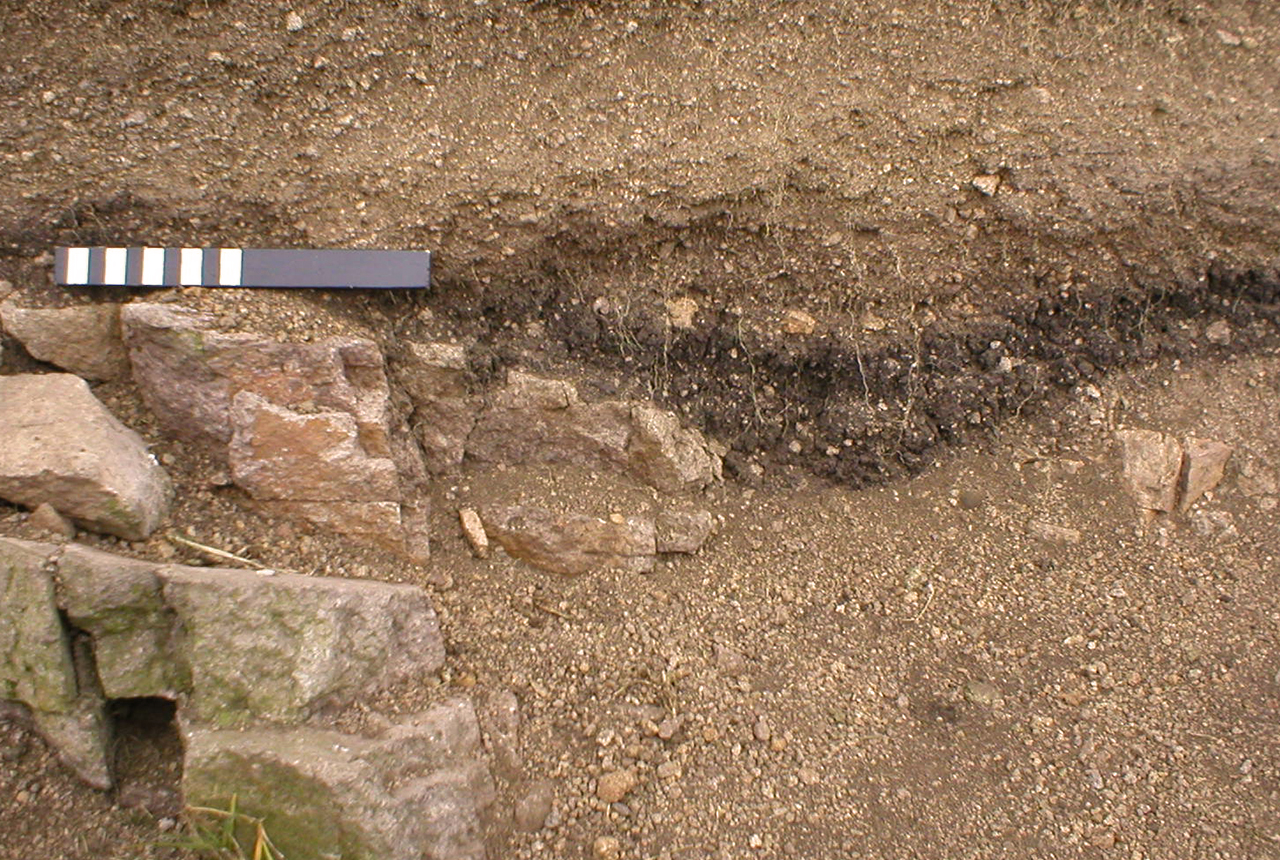Understanding long-term burial of organic carbon deposits
Carbon sequestration is one method of reducing the amount of carbon dioxide in the atmosphere, by capturing and storing it, contributing to climate change reduction.
07/11/2022 By BGS Press
Soils can help to sequester carbon, capturing carbon dioxide (CO2) from the atmosphere and storing it as buried organic carbon. Despite the numerous advantages, the potential to sequester carbon in soils in any given place is potentially limited by many various environmental, geological, technological, economic and political barriers. This presents a significant challenge to scientists tasked with conceiving ways of maintaining or increasing the long-term storage of organic carbon.
One option is expanding the use of the subsoil — the soil that sits beneath surface soil. This is currently an underexploited resource that could be used for greater organic carbon sequestration. It naturally contains substantial quantities of minerals such as iron oxides and clays, which scientists know can help stabilise organic carbon. It is also a proven natural strategy.
Hidden buried carbon deposits already exist in the subsoil as a result of erosion and deposition processes operating over geological time periods during the landscaping of Great Britain. A new study by a collaboration of researchers from the UK demonstrates the importance of understanding erosion processes in the long-term burial and storage of organic carbon. The research, ‘The role of post UK-LGM erosion processes in the long-term storage of buried organic C across Great Britain — a ‘first order’ assessment’, is published in Earth-Science Reviews and was led by scientists at BGS, the UK Centre for Ecology and Hydrogeology and Cranfield University.
Understanding the stability of this organic carbon buried over time and in different landscape settings may help to increase the success of new methods and future strategies to bury organic carbon.
Given the urgency to abate climate change, it is important that research considers how to maximise organic carbon storage and sequestration potential, whilst ensuring that storage mechanisms are protected against, and resilient to, perturbation.
The first stages in this effort are to establish where and how much buried organic carbon exists, the processes that led to its burial, and the mechanisms that have protected it against mineralisation. By doing so, it may be possible to develop effective national strategies for using soil parent material for organic carbon sequestration.
Andy Tye, BGS Geochemist and lead author of the study.
The challenge of storing carbon in soils
A major organic carbon burial route within landscapes is through erosion and deposition processes in which sediment (rock and soil) is transported and deposited in new places. These processes incorporate and bury organic carbon in the new deposits formed. This redistribution can occur over extremely long periods of time, driven by climatic, geological and geomorphological interactions.
More recently, the development of ‘frontier technologies’ has demonstrated potential to help sequester more and more carbon in the deeper soil, including utilising natural processes such as dissolved organic carbon leaching, breeding plants with deeper rooting systems, or injecting organic matter into soils. However, scientists believe that a considerable complication may exist through potential ‘priming effects’. These occur when the input of fresh soil organic carbon increases the potential for older, more stable soil organic carbon to be decomposed, releasing CO2. Disturbance of soil through agriculture or construction are ways in which the mixing of organic carbon sources may take place, increasing the opportunity for the priming effect to occur.
Addressing the knowledge gap
To increase understanding of the nature of these erosion processes, the researchers looked at the temporal and spatial characteristics of these long-term organic carbon sinks in soils. The study investigated the processes involved in and the extent of organic carbon burial across Great Britain since the UK Last Glacial Maximum (UK-LGM), approximately 27 000 years ago — the last time a large-scale, natural perturbation of the landscape occurred.
They found that specific erosion processes can determine the type of deposit formed and its likely organic carbon concentration. Glacial erosion processes often leave thick deposits but with relatively low organic carbon concentrations. Deposits developed in the Holocene (the current geological period) are generally thinner but with higher organic carbon concentrations, reflecting the role vegetation plays in reducing erosion and increasing the organic carbon contents of eroding soils.
Developing a national-scale model
Great Britain has extensive data on soil depth, buried organic carbon age and the spatial extent of deposits that have been collected through soil and geological surveys and landscape reconstruction. This information has enabled national-scale understanding of erosion-related deposits, along with their buried organic carbon properties.
Using this collated information, scientists used model simulations to produce estimates of the mass of organic carbon buried within three deposit types: Devensian (last ‘ice age’) till, Devensian glaciofluvial deposits and Holocene alluvium. Combined median estimates for these three deposit types alone, suggest that 385 Megatonnes (MT) of organic carbon may have been buried in these deposits across Great Britain, demonstrating the role post-UK-LGM erosion processes have had in the long-term sequestration of organic carbon.
Using these kinds of studies, it may be possible to produce a spatial framework, or national model, to identify those landscapes where buried organic carbon may be found, and its type.
From there, we can develop a greater understanding of how human perturbation, particularly the ability to excavate large areas and masses of soil parent material, along with modifying hydrological pathways, impacts the existing buried organic carbon store.
Andy Tye.
These are important first steps towards a greater understanding of where buried organic carbon exists within the landscape and provides a natural archive of material for future studies relating to organic carbon stabilisation.
Funding
This project was funded by BGS under its National Capability funding under projects NEE2089 and NEE7185.



